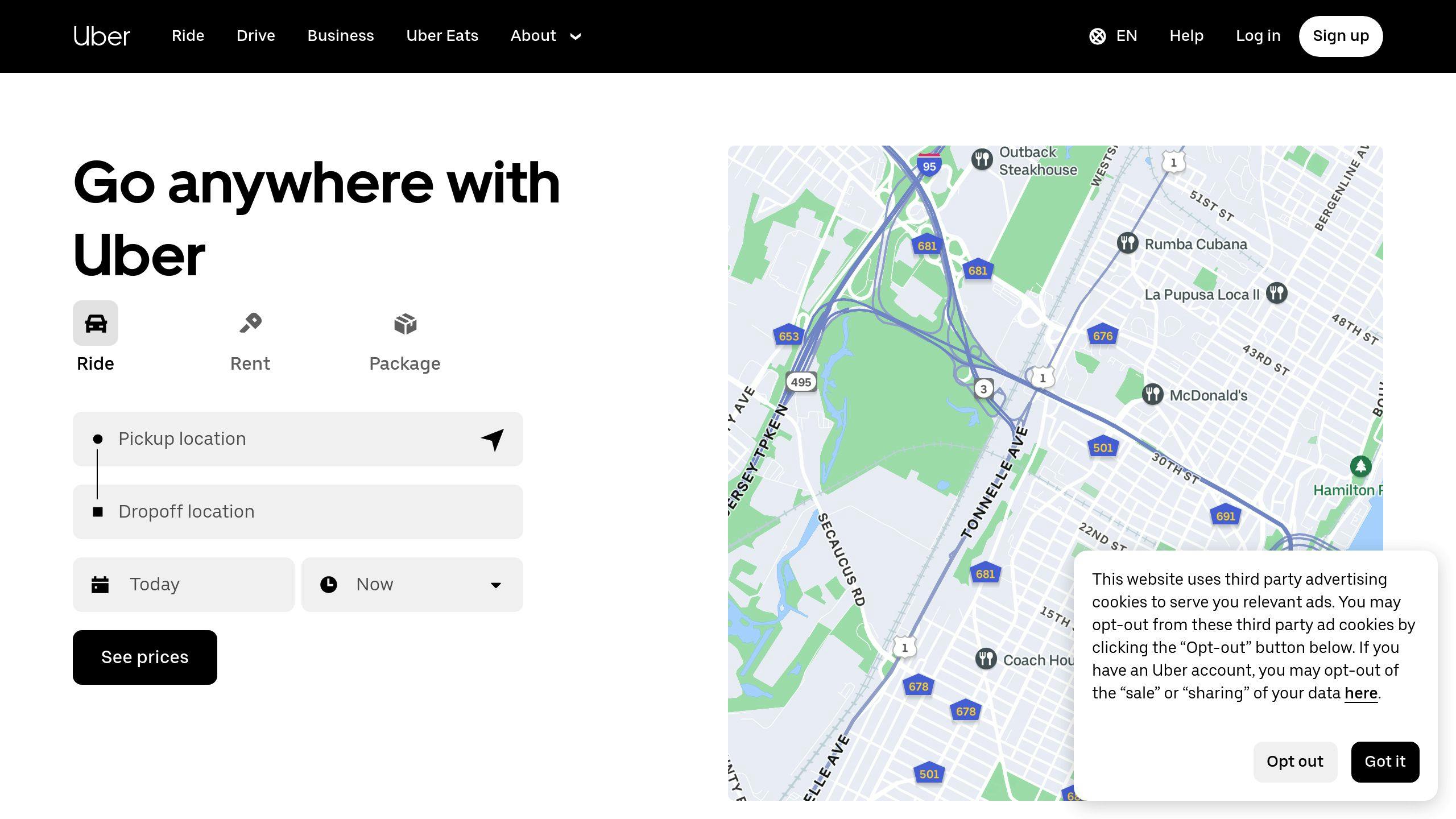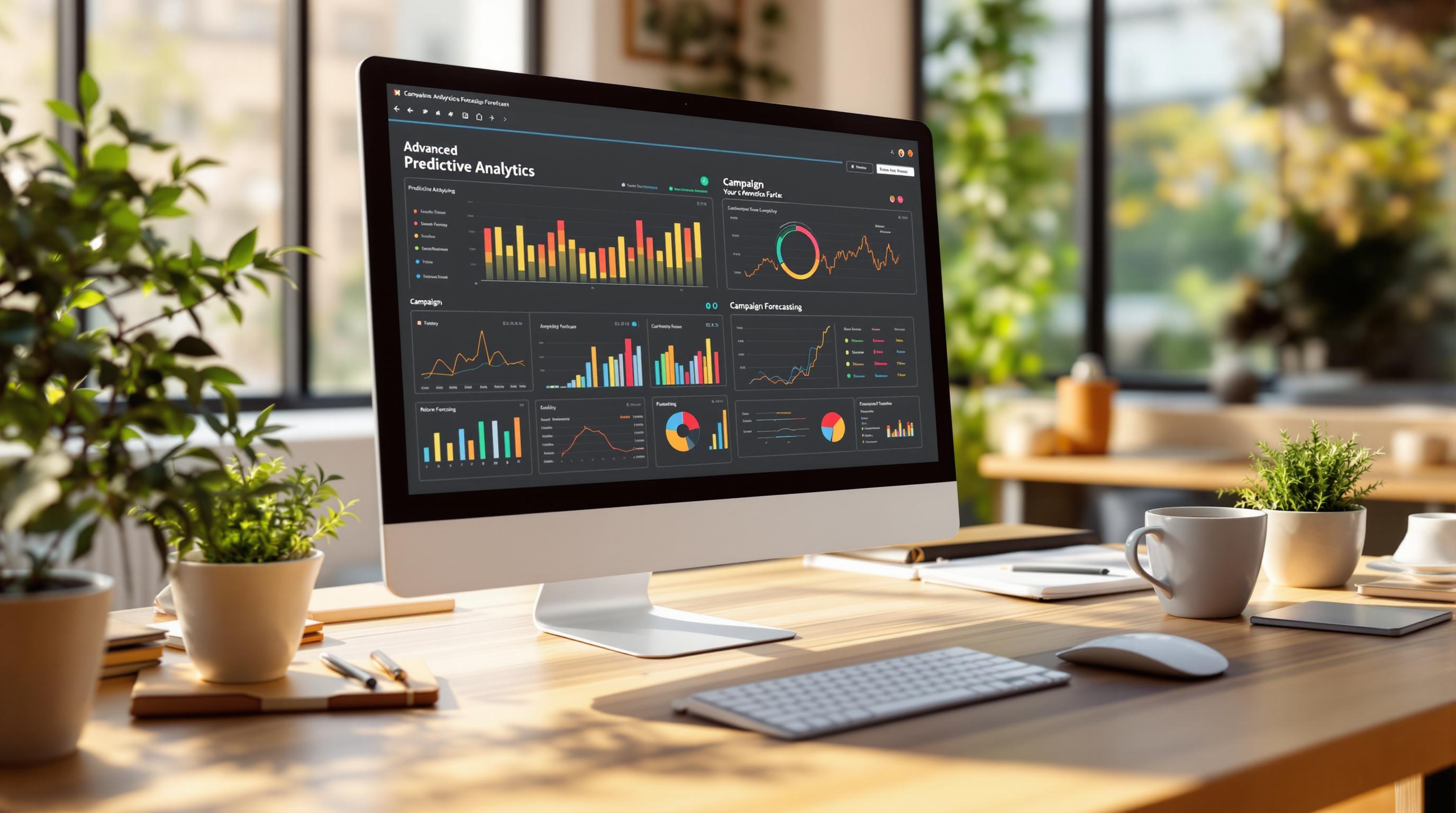- Retail (Amazon): Personalizes shopping experiences, manages inventory efficiently, and increases sales.
- Social Media (McDonald's): Enhances engagement by optimizing campaigns and tailoring content using live data.
- Manufacturing (Siemens, Bayer): Prevents equipment failures with predictive maintenance, reducing downtime by up to 50%.
- Transportation (Uber): Implements dynamic pricing to balance supply and demand, improving efficiency and user satisfaction.
- Finance (JPMorgan Chase): Detects and stops fraud in real time, safeguarding customer transactions.
Quick Comparison
| Industry | Application | Key Impact |
|---|---|---|
| Retail | Personalized recommendations | Better inventory control |
| Social Media | Campaign optimization | Higher engagement |
| Manufacturing | Predictive maintenance | Reduced operational downtime |
| Transportation | Dynamic pricing | Streamlined resource allocation |
| Finance | Fraud detection | Enhanced transaction security |
Real-time analytics is reshaping industries, helping businesses respond faster, improve efficiency, and deliver better customer experiences. Dive into the article to explore these success stories in detail.
Real Time Analytics Business Use Cases
1. Retail: Personalizing Customer Experiences
Real-time analytics has reshaped the retail industry, allowing businesses to instantly analyze customer behavior and make data-driven decisions. Amazon is a prime example, using this technology to tailor shopping experiences, manage inventory more effectively, and boost sales.
How Amazon Uses Real-Time Data

Amazon takes advantage of real-time analytics by analyzing data like browsing history, search queries, purchase habits, and product reviews. This enables the company to offer personalized recommendations, adjust prices dynamically, and manage inventory with precision. A 2024 Mactores report highlights how this strategy has improved operations by "streamlining the supply chain, reducing stockouts, and minimizing excess inventory" [1].
Here’s how Amazon puts this data to work:
- Inventory Management: Ensures products are available while avoiding overstock.
- Personalized Shopping: Offers tailored recommendations based on user data.
- Targeted Promotions: Runs customized campaigns to drive sales.
Amazon’s approach shows how real-time analytics can enhance both operational processes and customer experiences. While Amazon leads in retail, industries like social media are also tapping into real-time analytics to improve user engagement and satisfaction.
2. Social Media: Improving Engagement with Real-Time Insights
Social media platforms generate massive amounts of real-time data, giving businesses the ability to fine-tune engagement, monitor campaigns, and tweak strategies on the fly.
McDonald's Social Media Strategy

McDonald's uses advanced tools to manage and improve their social media efforts, showcasing how real-time analytics can elevate digital marketing.
Their strategy focuses on three main areas:
- Performance Monitoring: Analyzing metrics to pinpoint which content resonates most with their audience.
- Campaign Optimization: Making mid-campaign adjustments to maximize return on investment (ROI).
- Audience Insights: Leveraging data to create content that matches audience preferences.
This approach isn’t unique to McDonald's - 71% of marketers now depend on real-time analytics [3]. For instance, during a recent campaign, McDonald's improved engagement by 20% by using real-time insights to refine their content and better target their audience.
Their success shows how real-time analytics can help businesses adapt quickly and connect with customers in ever-changing digital spaces. Beyond social media, industries like manufacturing also benefit from real-time data, using it to avoid costly interruptions.
3. Manufacturing: Preventing Equipment Failures
Manufacturing companies are leveraging real-time analytics to predict and resolve potential issues, avoiding expensive breakdowns and halting production delays.
Real-Time Data for Smarter Maintenance
Siemens has made strides in predictive maintenance by using real-time analytics, cutting unplanned downtime by half [1]. This approach not only avoids interruptions but also enhances overall efficiency - something every industry values.
Bayer Crop Science has introduced 'virtual factories' across nine North American corn seed manufacturing sites [2]. These systems continuously track:
- Equipment temperature
- Vibration levels
- Performance metrics
- Stress and usage patterns
IoT sensors feed this data into an analytics platform, enabling maintenance teams to take action:
- Spot abnormalities early and plan maintenance during non-peak times.
- Adjust equipment settings in real time to improve performance.
"Real-time analytics transformed our maintenance approach, shifting from reactive to predictive and improving operational efficiency." [2]
Key Components of the System
Here’s how the process works, step by step:
| Component | Function | Impact |
|---|---|---|
| IoT Sensors | Monitor equipment conditions continuously | Detect potential issues early |
| Real-Time Analytics Tools | Analyze incoming sensor data | Provide actionable insights |
| Predictive Models | Use data patterns to forecast failures | Minimize unexpected downtime |
| Maintenance Scheduling | Plan upkeep based on analytics | Better resource management |
The adoption of real-time analytics in manufacturing is growing rapidly. The global streaming analytics market is expected to increase at a 29% annual growth rate through 2025 [2]. This trend highlights how these tools are reshaping not just manufacturing but also industries like transportation and finance.
sbb-itb-5174ba0
4. Transportation: Real-Time Pricing Adjustments
In transportation, real-time analytics plays a key role in adjusting pricing and managing resources efficiently. By processing large amounts of live data, companies can fine-tune their operations and align supply with demand more effectively.
Uber's Dynamic Pricing Model

Uber has become a leader in using real-time analytics to implement dynamic pricing. Their system evaluates multiple factors at once - traffic patterns, driver locations, passenger demand, and time of day - to adjust fares on the fly. This approach, often referred to as "surge pricing", has reshaped the ride-sharing industry.
Here’s how it works:
- Drivers benefit from higher earnings during busy periods.
- Passengers experience shorter wait times in high-demand zones.
- Companies allocate resources more efficiently to meet demand.
Machine learning adds another layer of sophistication by analyzing both historical data and live trends. This allows companies like Uber to predict demand spikes and adjust prices proactively.
Real-time analytics also brings transparency to the system:
- Passengers get accurate fare estimates.
- Drivers can plan better to maximize earnings.
- Companies streamline operations for smoother service.
Uber’s use of real-time data shows how analytics can revolutionize industries, making them more responsive and customer-focused. As the transportation sector continues to evolve, real-time analytics will remain a driving force for improving efficiency and enhancing user experiences.
5. Finance: Detecting Fraud in Real Time
In the financial world, real-time analytics play a crucial role in fighting fraud. By analyzing massive amounts of transaction data instantly, banks can spot and stop suspicious activity before it leads to financial losses.
Here's how it works: financial institutions monitor transaction patterns, customer locations, device details, IP addresses, and past behavior in real time. This allows them to flag unusual activity and take action before a transaction is completed. It's a game-changer for financial security.
Take JPMorgan Chase, for example. They use real-time systems to detect and respond to suspicious transactions immediately. This approach shows how modern banking systems can assess risks and safeguard customers with quick decision-making.
Machine learning adds an extra layer of protection by adapting to new threats. These systems are designed to:
| Feature | Purpose |
|---|---|
| Pattern Recognition | Quickly spot unusual transaction behaviors |
| Anomaly Detection | Highlight transactions outside typical patterns |
| Predictive Analysis | Use past data to foresee potential fraud |
| Real-time Response | Block risky transactions before they're completed |
By using real-time analytics, banks not only shield customers but also strengthen trust and ensure smooth operations. To make these systems effective, they focus on reducing false alarms while keeping security intact. This is achieved through:
- Ongoing monitoring of transaction trends
- Instant analysis of customer activities
- Smart alerts that highlight high-risk cases
- Automated responses to handle flagged transactions
This approach underlines how real-time data analysis is reshaping fraud detection, protecting both financial institutions and their customers without disrupting normal operations.
Conclusion
Real-time analytics is reshaping industries by delivering actionable insights instantly. From retail to finance, its influence showcases the potential of analyzing data in the moment.
Highlights from Key Examples
Examples like Amazon's inventory management and JPMorgan Chase's fraud detection demonstrate how real-time analytics boosts efficiency, strengthens security, and improves customer engagement across various fields.
| Industry | Achievement | Result |
|---|---|---|
| Retail | Personalized Experience | Better inventory control |
| Transportation | Dynamic Pricing | Streamlined service |
| Telecommunications | Network Performance | Improved service quality |
| Finance | Fraud Prevention | Minimized financial losses |
| Manufacturing | Predictive Maintenance | Reduced downtime |
Tools to Support Real-Time Analytics
The growing reliance on real-time analytics highlights the need for effective tools and strategies. Finding the right solutions is essential for businesses aiming to enhance customer experiences, streamline operations, or bolster security.
The Marketing Analytics Tools Directory is a helpful resource for identifying tools tailored to specific business needs. Whether your focus is on operational efficiency or customer satisfaction, this directory can guide you to the right choice.
As technology advances, tools like AI and faster data processing are pushing the boundaries of what real-time analytics can achieve. This isn't just a step forward - it's a shift in how businesses compete and thrive in a data-driven world.
FAQs
What companies use real-time data?
Many companies across different industries are making the most of real-time analytics to improve their operations and services. Here are a few notable examples:
- Verizon uses live network data to detect and fix service disruptions before customers even notice, ensuring smooth and uninterrupted service [1].
- Uber processes live traffic data, driver availability, and passenger demand to fine-tune their dynamic pricing and minimize wait times [1].
- HSBC, Visa, and MasterCard rely on real-time analytics to safeguard customer transactions, identifying and stopping fraudulent activity as it happens.
Here's a quick breakdown of how real-time analytics is applied:
| Company | Industry | Real-Time Application | Benefit |
|---|---|---|---|
| Verizon | Telecommunications | Network Monitoring | Resolves issues early |
| Uber | Transportation | Dynamic Pricing | Improves efficiency |
| HSBC/Visa/etc. | Finance | Fraud Detection | Boosts transaction security |
These examples show how real-time data helps businesses improve operations, deliver better customer experiences, and enhance security.


